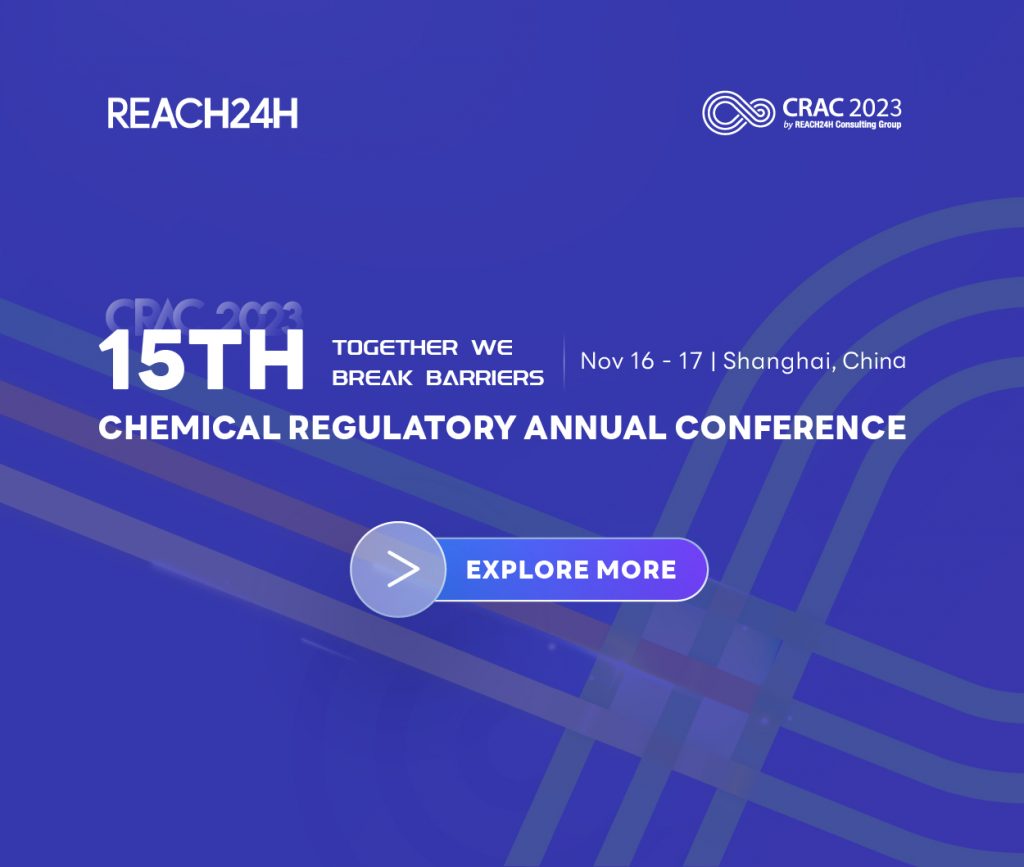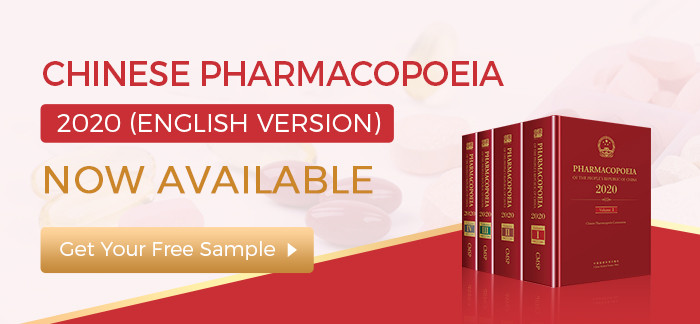Consumer Chemical Products and Biocides Safety Control Act (K-BPR)
Understanding K-BPR
In response to the rising concerns over chemical products after the “toxic humidifier sterilizer” accident in 2011, South Korea has accelerated the legislative process regarding chemical products. Since the enactment of “Consumer Chemical Products And Biocides Safety Control Act” (hereinafter as “Chemical Product Safety Act”) in 2018, a precautionary management system was established, comprising of conformity verification/approval of consumer chemical products and prior-approval of biocidal active substances and biocidal products, as well as the distribution and follow-up management including display, advertisements, periodic reporting and information disclosure, etc.
The main purpose of South Korea’s Chemical Product Safety Act (K-BPR) regulations is to prescribe matters concerning the risk assessment of consumer chemical products, approval of biocidal substances and biocidal products, and standards for biocide-treated products, thereby protecting the public health and the environment and contributing to the public safety.
Regulatory Scope
What Products are not covered by K-BPR?
The products listed in the following laws are not covered by K-BPR:
- Health functional foods regulated by the “Law on Health Functional Foods”
- Munitions regulated by the Munitions Management Act and the Defense Business Act
- Pesticides, natural plant protection agents, original agents and pesticide using-equipment regulated by the “Pesticide Management Law”
- Water treatment agents regulated by the Drinking Water Management Act
- Single-ingredient feeds and supplementary feeds regulated by the Feed Management Act
- Substances regulated by the Ship ballast water Management Act
- Food, food additives, utensils, containers, and packaging regulated by the Food Sanitation Law
- Pharmaceuticals, quasi-drugs, animal pharmaceuticals, and quasi-drugs regulated by the Pharmaceutical Affairs Law
- Sanitary products regulated by the Sanitary Products Management Law
- Medical devices regulated by the Medical Device Law
- Cosmetics regulated by the Cosmetics Act
- Organic food, non-edible oil processed products, processed food without pesticide raw materials, organic agricultural and fishery materials, and permitted substances regulated by the “Act on the Management and Support of the Cultivation of Green Agriculture and Fisheries and Organic Foods, etc.”
What Product-types are covered by K-BPR?
The jurisdiction of K-BPR covers consumer chemical products and biocidal products respectively.
Tables 1 and 2 describe the different product types in detail.
Table 1 Product-types of Consumer Chemical Products
| Classification | Categories |
| 1. Detergent Product Group | 1. Cleaners |
| 2. Remover | |
| 2. Laundry Products Group | 1. Laundry Detergent |
| 2. Bleaching Agents | |
| 3. Fabric Softeners | |
| 3. Coating Products Group | 1. Gloss Coatings |
| 2. Special Purpose Coatings | |
| 3. Anti-Rust Additives | |
| 4. Lubricant | |
| 5. Ironing Auxiliaries | |
| 6. Finish Agents | |
| 7. Hardeners | |
| 4. Adhesive Products Group | 1. Adhesives |
| 2. Gap and Crack Fillers | |
| 3. Hardening Accelerators | |
| 5. Air Freshener Products Group | 1. Air Fresheners |
| 2. Deodorizing Agents | |
| 6. Dye and Colorant Painting Products Group | 1. Dye Agents |
| 2. Colorant Painting Agents | |
| 7. Auto Products Group | 1. Windshield Washer Fluids for Auto |
| 2. Engine Antifreezes | |
| 8. Printing and Document Related Products | 1. Ink Cartridges And Toners |
| 2. Red Seal Ink Pads | |
| 3. Correction Fluids and Tapes | |
| 9. Beauty Products Group | 1. Adhesives for Beauty |
| 2. Tattoo Inks | |
| 10. Management Product Group for Leisure Goods | 1. Cleaners/Brightener for Sporting goods |
| 11. Disinfection Products Group | 1. Disinfectants |
| 2. Algicide | |
| 3. Antibacterial and Disinfectant for Humidifiers | |
| 4. Sterilization and Disinfectant for Preventing Infectious Diseases | |
| 12. Insecticides and Repellents | 1. Insect Repellents |
| 2. Health Insecticides | |
| 3. Health Repellents | |
| 4. Insecticide for Preventing Infectious Disease Prevention | |
| 5. Rodenticide for Preventing Infectious Disease Prevention | |
| 13. Preservative Products & Preservative-Treated Products | 1. Wood Preservatives |
| 2. Preservative-Treated Filter Product | |
| 14. Other Products Group | 1. Candle |
| 2. Dehumidifying Agent | |
| 3. Artificial Snow Spray | |
| 4. Fog Fluid for Performance | |
| 5. Household Chemical Products for Humidifiers |
Table 2 Product-Types of Biocidal Products
| Classification | Categories |
| 1. Fungicides
(Disinfectant) |
1. Disinfectants |
| 2. Algaecides | |
| 2. Repellents | 3. Rodenticides |
| 4. Control of other vertebrates | |
| 5. Insecticides | |
| 6. Control of other vertebrates | |
| 7. Repellents | |
| 3. Preservatives
|
8. Preservatives for products |
| 9. Film preservatives | |
| 10. Fiber and leather preservatives | |
| 11. Wood preservatives | |
| 12. Construction material preservatives | |
| 13. Material and equipment preservatives | |
| 14. Embalming and taxidermist fluids | |
| 4. Other | 15. Antifouling products |
Please note that according to the provisions of K-BPR, different products have different compliance procedures and belong to different management departments. However, at the same time, there are also interlinked areas.
Who should comply with K-BPR?
- Manufactures or importers in Korea
- From January 1, 2021, manufacturers outside Korea could entrust a qualified Korea OR to comply with it.
How to comply with the regulations of consumer chemical products?
Consumer chemical products means any chemical product used in everyday living spaces such as houses, offices, or public use facilities, which is likely to cause exposure of chemical substances to humans or the environment.
For products already established with safety standards, the importers or manufacturers need to verify the conformity at designated testing/inspection institutes and notify product information to the Korea Environmental Industry & Technology Institute (KEITI) every 3 years.
For products not yet established with safety standards, the importers or manufacturers need to obtain the “approval of consumer chemical products subject to safety verification” from the National Institute of Environmental Research (NIER).
The procedures required for conformity verification and approval of consumer chemical products are summarized as follows:
Figure 1 The compliance procedures for the products already established with safety standards
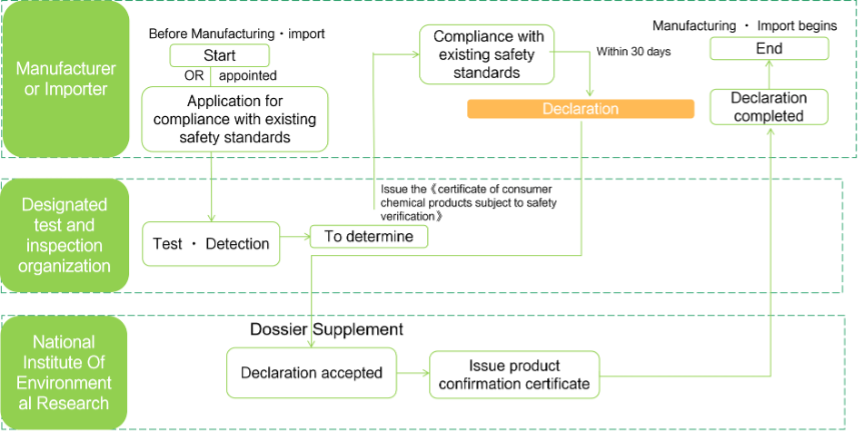
Figure 2 The compliance procedures for the products not yet established with safety standards

It is important to note that most of the consumer chemical products not yet established with safety standards have a biocidal function and will be regulated as biocidal products after their transitional period of deferred approval. Therefore, they need to comply with both the consumer chemical product regulations and biocide regulations within their transitional period, as introduced in the next section.
How to comply with the regulations of biocidal products?
It is divided into three major parts: biocidal active substances, biocidal products and treated articles.
Biocidal active substances (AS)
– Definition of AS
Active substance refers to any chemical substance, natural substance, or microbe used to remove, render harmless, or deter any harmful organism.
– The existing active substance
Existing active substances:The biocidal active substances that put into Korean market before December 13, 2018 are deemed as the existing active substances. The existing active substances need to apply for pre-registration or late pre-registration in order to obtain the transitional period of the active substances approval, and then complete the application for the active substances approval within the corresponding transitional period.
Pre-registration or Late pre-registration: the company who manufactures or imports biocidal active substances or products in Korea market should firstly apply pre-registration to be included in existing substance list between January 1, 2019 to June 30, 2019 to obtain transitional period of active substance. From March 24, 2020, late pre-registration is mandatory before biocidal active substances or products manufactured or imported to Korea. The transitional period can be up to 10 years depending on the product type. (Late) pre-registered existing active substances could be put into Korea market without approval during the transitional period. Table 3 details the different time limits for different types of biocide products.
Table 3 Existing Active Substance and Transitional Period
| Transitional Period | Dec 31, 2022 | Dec 31, 2024 | Dec 31, 2027 | Dec 31, 2029 |
| Product-types
|
PT1.Disinfectants
PT2.Algaecides PT3.Rodenticides PT5.Insecticides PT7.Repellents |
PT4.Control of other vertebrates
PT6.Control of other vertebrates PT11.Wood preservatives |
PT8.Preservatives for products
PT9.Film preservatives PT10.Fiber and leather preservatives |
PT12.Construction material preservatives
PT13.Material and equipment preservatives PT14.Embalming and taxidermist fluids PT15.Antifouling products |
– New active substances
Substances not included in the list of existing active substances are considered as new active substances. For new active substances, there is no transitional period and companies must obtain approval before producing or exporting to Korea market.
– Approval of AS
The AS applicant should apply and submit the required information to NIER via the online system CHEMP. If the completeness checked is satisfied, a notice will be issued to the applicant and the review and approval will proceed. Within 18 months from the date of issuing the notice (excluding data supplementation), NIER will offer the applicant a draft evaluation report for comments, which will further be deliberated by the Management Committee and finally, a notice of AS approval will be issued to the applicant. The procedures required for approval of active substances are summarized as follows:
Figure 3 the compliance procedures for approval of biocidal active substances
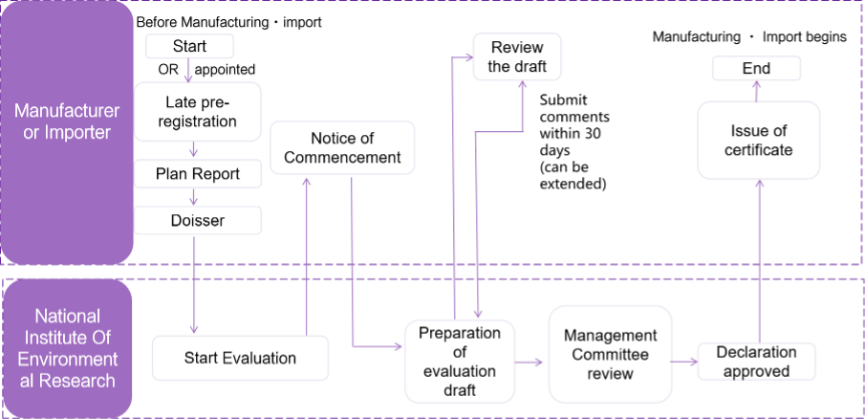
Biocidal Product (BP)
– Definition of BP
Biocidal product refers means any of the following products with the main purpose of removal, etc. of harmful organisms:
- A product composed of one or more biocidal substances, or a product with a mixture of a biocidal substance and a chemical substance, a natural substance, or a microbe which is not a biocidal substance.
- A product generating a biocidal substance from a chemical substance or a mixture of a chemical substance or natural substance or a microbe.
– Authorisation of BP
Simliar to the AS approval, BP applications are processed, preliminarily checked by NIER, and deliberated by the Management Committee, but the draft evaluation report will be compiled within 12 months. The procedures required for approval of biocidal products are summarized as follows:
Figure 4 the compliance procedures for authorization of biocidal products
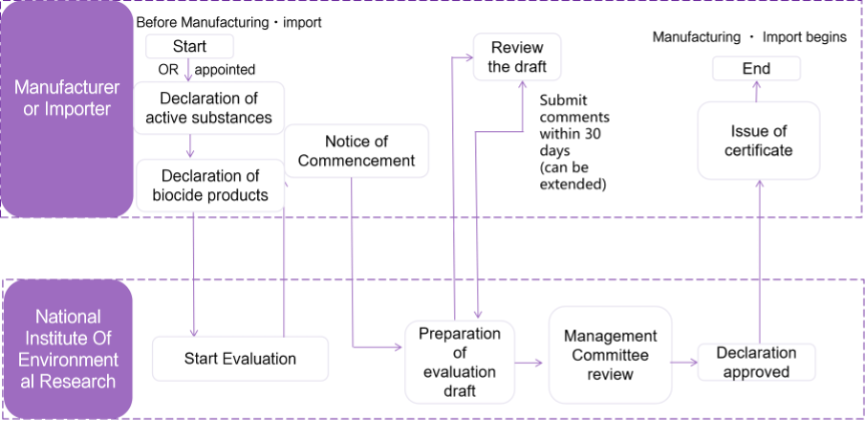
Treated Article (TA)
– Definition of TA
Treated Article or treated-products refer any product in which a biocidal product has been used for an ancillary purpose of removal, etc. of harmful organisms other than the main function of the product.
– Compliance requirements for TA
According to current developments of regulations, active substances and biocidal products used in the treated article need to be declared and approved before declaring the treated article.
Summary
To sum up, both consumer Chemical products and biocidal products need to go through complex evaluation and declaration process. Meanwhile, the continuous improvement and supplement of laws have imposed a certain burden on the declaration of enterprises. Therefore, for the compliance of South Korean Chemical Product Safety Act, different enterprises need to choose the most suitable compliance strategy according to their actual situation and requirements.
Future Trends
To prevent the reoccurrence of “toxic humidifier sterilizer”, the “Consumer Chemical Products And Biocides Safety Control Act” established a statutory plan called “comprehensive management plan for household chemicals and biocides”, which is renewed every five years. The 1st comprehensive management plan was released in early 2021, aimed to strengthen the all-process management in line with the rapid market conditions, particularly the Covid-19 pandemic:
- Quarantine-use disinfectants will be expedited and MoE compiling guidelines and list of products eligible for quarantine purpose;
- A roadmap for microplastic in consumer chemical products will be prepared. It would be mandatory to display the uses of microplastic by 2023 and report the usage and usage history by 2024 and the use of microplastic in certain products will be banned by 2025;
- Online stores and brokerage will be mandatorily required to check whether the product is illegal;
- For product already been placed on the market, the number of inspections will be increased from 1700 in 2020 to 2000 by 2025;
- MoE will increase its support for the industry to prepare dossiers. In addition to the simplified process for internationally evaluated biocidal active substances, an “approval support team” will be formed to offer one-to-one consultation for SMEs and support the entire material preparing process;
- Owing to concerns over unregulated biocidal substances being placed on the market, some life-related products with high human exposure would be recalled after a fact-finding survey.
In addition, a plan strengthening the labeling standard for biocidal treated articles will be prepared to prevent exaggerated advertisement.
Our Services
| Consumer Chemical Product Subject to Safety Check | Product analysis report
Compliance check of safety standards Testing arrangement for safety check Review of the declaration of safety check Application submission Document Supplement |
| Biocidal active substance, Biocidal products, Treated articles | Only Representative (OR) Service
Data gap analysis and compliance analysis report Late Pre-registration Preparation and submission of approval plan reports CICO management Application of approval of active substances Application of biocidal product authorisation Regulatory compliance of treated articles Tests arrangement and monitoring Review the labelling |
| Others | Regulation trainings
K-BPR comprehensive consulting service Translation of regulatory documents and application materials |
